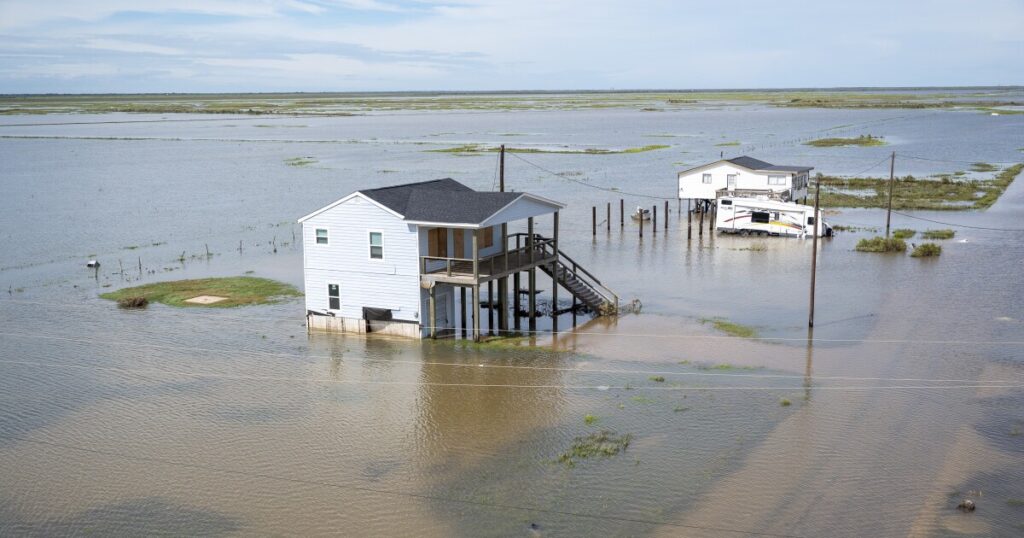13 largest homeowners insurers denied nearly half of claims last year

Likely looking to offset the rising costs of climate change, the nation’s 13 largest homeowners insurers denied 47.5% of their claims last year, compared with 37.4% for all reporting underwriters, a study from Weiss Ratings alleged.
Several factors can lead to a claim being denied, including certain risks such as flood and windstorm not being covered under standard policies.
But for Martin Weiss, the founder of Weiss Ratings, there’s more to the story.
“Instead of maintaining adequate reserves to cover the likely potential damage from storms, floods and forest fires, many insurers distribute the funds to shareholders or move them to other subsidiaries,” Weiss said in a press release. “Now, to make ends meet, these companies are closing about half of homeowner claims with no payment whatsoever.”
That is just another layer of issues on the rising problem of whether homeowners can obtain this coverage at a time when its costs are rising.
A recent Matic survey of mortgage lenders found 63% reporting at least one borrower they recently worked with had a problem securing home insurance. Among the common issues was the borrower’s debt-to-income ratio becoming too high once the cost of insurance was factored in.
In May, Fannie Mae and Freddie Mac issued a joint blog post explaining why they require a replacement cost value policy rather than the less-expensive actual cost value coverage.
The insurer with the highest claims denial rate according to Weiss is Farm Bureau Property & Casualty Insurance Co., at 70.5% of 2023 claims closed without a payment. That is much higher than No. 2 American Bankers Insurance Co. of Florida with 51.2%.
Weiss looked at National Association of Insurance Commissioners data on all homeowners and farm owners claims filed and closed last year, per each company’s filings with regulators.
The 13 companies listed handled almost 3.9 million claims during 2023; all reporting insurers had 8.8 million claims closed.
Weiss said the high denial rates are not normal.
“They’ve been creeping up steadily for nearly two decades and have now reached alarming levels, especially among some of the biggest providers in disaster-prone states like Florida and California,” Weiss said.
“The public can’t even begin to cope with the property insurance crisis until both the industry and their regulators provide full transparency, a change in standard operating procedure that may not be possible without strong ‘Truth in Insurance’ legislation.”
Zillow is now including climate risk data from First Street on its for sale property listings. A September 2023 survey from the company found over 80% of homebuyers are looking at climate risks as they shop for a new place to live.
“Healthy markets are ones where buyers and sellers have access to all relevant data for their decisions,” Skylar Olsen, chief economist at Zillow, said in a press release. “As concerns about flooding, extreme temperatures and wildfires grow — and what that might mean for future insurance costs — this tool also helps agents inform their clients in discussing climate risk, insurance and long-term affordability.”
Insurers have been withdrawing from climate-risk-prone markets altogether, if not renewing policies, so for buyers, securing essential coverage is becoming increasingly challenging, said Travis Hodges, managing director at insurance brokerage VIU by HUB.
“The choice to forgo insurance coverage also heightens mortgage underwriting risk significantly, leaving lenders vulnerable to substantial financial losses in the event of property damage or liability claims,” Hodges said. “The absence of adequate insurance protection not only increases the likelihood of defaults and foreclosure but also prompts lenders and insurers to reevaluate their risk exposure.”
It could result in stricter lending standards along with the imposition of higher premiums on borrowers, to reflect the evolving risk landscape and the imperative of safeguarding financial interests, Hodges continued.
“It’s crucial that we amp up the communication and collaboration between insurers, borrowers, and lenders,” Hodges added. “By doing so, we can ensure a thorough risk assessment and tackle the negative fallout of underinsurance in the mortgage market head-on.”
On the other hand, 72% of homeowners surveyed by Lexis Nexis Risk Solutions are willing to pay higher premiums to make sure they are fully covered, its latest U.S. Home Insurance Consumer Insights report found.
Just more than half, 51%, claim they know the specific details of their homeowners insurance policy; an industry analysis suggests that these people may actually be underinsured.
“Insurance carriers have an opportunity to proactively engage with homeowners, especially those with the ‘set it and forget it’ mentality, to ensure they are adequately covered and informed of the ever-evolving risks that are present in the home insurance market,” said Cole Winans, vice president and general manager, home insurance, LexisNexis Risk Solutions, in a press release.
“It is becoming more necessary than ever for carriers to adopt a consultative mindset with consumers who might be looking to shop based simply on higher premiums. Our research indicates that consumers in both cohorts studied are often willing to pay more to cover unforeseen risks.”
Homeowners with the “set it and forget it” mindset, 47% of those responding to Lexis Nexis Risk Solutions research, are less engaged with the details of their policies.
Just under six-in-10 of all consumers are highly concerned about having a situation where they would need to use their homeowners insurance policy.







